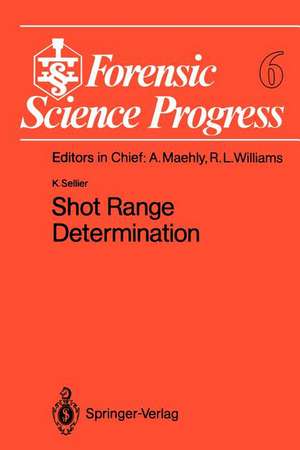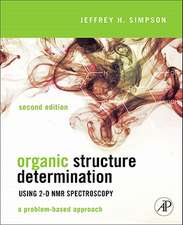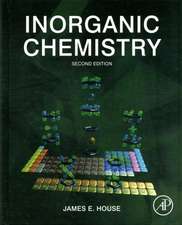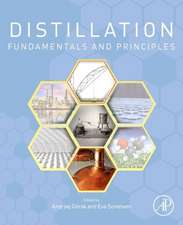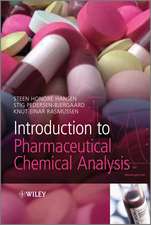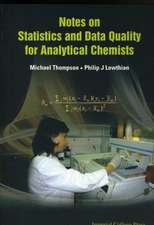Shot Range Determination: Forensic Science Progress, cartea 6
Autor Karl Sellieren Limba Engleză Paperback – 23 dec 2011
Preț: 631.72 lei
Preț vechi: 743.20 lei
-15% Nou
Puncte Express: 948
Preț estimativ în valută:
120.88€ • 126.55$ • 100.02£
120.88€ • 126.55$ • 100.02£
Carte tipărită la comandă
Livrare economică 07-21 aprilie
Preluare comenzi: 021 569.72.76
Specificații
ISBN-13: 9783642767234
ISBN-10: 3642767230
Pagini: 120
Ilustrații: XI, 105 p. 37 illus.
Dimensiuni: 155 x 235 x 6 mm
Greutate: 0.18 kg
Ediția:Softcover reprint of the original 1st ed. 1991
Editura: Springer Berlin, Heidelberg
Colecția Springer
Seria Forensic Science Progress
Locul publicării:Berlin, Heidelberg, Germany
ISBN-10: 3642767230
Pagini: 120
Ilustrații: XI, 105 p. 37 illus.
Dimensiuni: 155 x 235 x 6 mm
Greutate: 0.18 kg
Ediția:Softcover reprint of the original 1st ed. 1991
Editura: Springer Berlin, Heidelberg
Colecția Springer
Seria Forensic Science Progress
Locul publicării:Berlin, Heidelberg, Germany
Public țintă
ResearchCuprins
1 Introduction.- 2 General Section.- 2.1 Ammunitions.- 2.2 Sequence of Events During Firing.- 3 Classification of Shot Range Zones.- 3.1 Contact Gunshot (Shot with Muzzle Contact).- 3.2 Intermediate Range Gunshot.- 3.3 Distant Gunshot.- 4 Qualitative Detection of the Signs of a Close Range Shot.- 4.1 Detection of Powder Tattooing.- 4.2 Detection of the Soot Element Pb.- 5 Morphological Methods of Shot Range Determination.- 5.1 General Principles.- 5.2 Infrared Photography.- 5.3 Sheet Printing Methods, Chemical.- 5.4 Sheet Printing Method, Physical (Autoradiography).- 5.5 Determination from Powder Tattooing.- 5.6 Imaging with X-Ray, X-Ray Fluorescence.- 6 The Sampling Test Method for the Quantitative Determination of Shot Range.- 6.1 Initial Remarks and Underlying Principles.- 6.2 Emission Spectrum Analysis (ESA).- 6.3 Atomic Absorption Spectrography (AAS).- 6.4 Neutron Activation Analyses (NAA).- 6.5 Polarography.- 6.6 Other Methods of Shot Range Determination.- 6.7 Possible Errors in Shot Range Determination.- 7 Shot Range Determination for Shotguns.- 7.1 General Remarks.- 7.2 Characteristics of the Barrel, Choke.- 7.3 Shot Patterns—The Diameter of the Shot Pattern as a Function of the Range and Other Parameters.- 7.4 Practical Procedures of Shot Range Determination for Shotguns.- 8 References and Further Readings.- 9 Subject Index.
